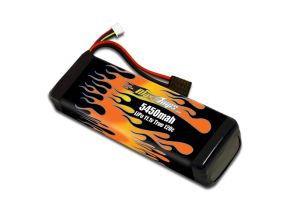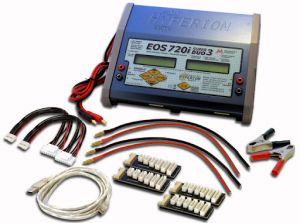Batteries
Almost all combat robots are powered by batteries. Although compressed gas or internal combustion engines are occasionally used (especially for weapons), batteries are always required.
There are too many batteries to choose from to make any meaningful list here, so we list some criteria to consider when choosing a battery.
Roger's Hobby Center has a really good guide to lipo batteries.
Battery types (chemistry)
Nowadays (2021) nearly all combat robots run on lithium polymer (LiPo) battery packs. This is because they give the highest power density and are widely available. For safety, childrens' toy robots usually use a different type, generally NiMH. Transmitters often use other types.
Series and parallel cells
Battery packs are generally formed of more than one "cell". These are put in series or occasionally parallel.
Series cells = more volts Parallel cells = more amps
Be careful with series or parallel cells - it is usually better to buy a ready made pack with the correct number / size of cells.
How much capacity do I need?
Since keeping your robots weight down is always a high priority, you should only use as much battery as you need. One of the best tools for this was created by the legendary Steve Judd of Team Tentacle. His amp hour calculator helps determine how much battery you'll need for your robot's drive system. Team Run Amok hosts a version of the calculator over on their Ask Aaron site that you can use.
Don't worry if the calculator doesn't list your chosen motor. You can still get a good estimate of how much capacity you need by typing in the proper voltage, weight, wheel speed and size into the calculator. The Ask Aaron site does a good job explaining how the calculator works.
Once you've figured out what you need for your drive system, you'll need to also add in the capacity you'll need for your weapon system.
Chargers
Some older chargers could charge LiPo batteries without using a balance plug but doing this is not recommended. If the cells within a pack become out of balance you run the risk of overcharging part of the battery. Also, some battery failures involve a single cell within a pack and a balanced charge will detect the problem.
There are a lot of options for chargers. Some require external 12v power supplies while others simply plug into an outlet. Although requiring an external power supply is inconvenient, it typically allows for faster charging. Some are limited to charging a single pack while others can charge multiple packs at the same time. Also, if you are running at higher voltages, make sure that your charge works for your batteries as some top out at 4 cells ~14.4v.
Safety
See Roger's Hobby center (link above). Rules of thumb:
- Use the right charger type (and settings)
- Don't use parallel charging boards
- Charge in a lipo bag
- discard damaged / puffy packs
Connectors
There are many connector types suitible for different robot weight classes. Although some weight can be saved by soldering batteries directly to your electronics, it makes charging them challenging. Check out the Connectors page to see your options.

